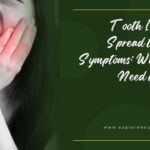Introduction: When Facial Pain Isn’t What It Seems
Trigeminal neuralgia is known for causing sudden, stabbing facial pain that can stop you in your tracks. But here’s the tricky part—it’s not always easy to diagnose. Many people live with pain for months or even years, misdiagnosed or under-treated, because their condition looks like trigeminal neuralgia but isn’t. So what can be mistaken for trigeminal neuralgia? Quite a few things, actually. From dental issues to migraine disorders, several conditions cause similar symptoms but require very different treatments.
In this guide, we’ll unpack what makes trigeminal neuralgia unique, explore common look-alike conditions, and offer insights into how to navigate diagnosis and treatment—especially for patients and providers in the U.S. navigating complex healthcare options in 2025.
What Is Trigeminal Neuralgia?
Trigeminal neuralgia (TN) is a chronic pain condition affecting the trigeminal nerve, which is responsible for sensation in the face. It causes sudden, electric shock-like pain on one side of the face—usually around the cheeks, jaw, or lips.
Common Features of TN:
- Sharp, stabbing, or burning facial pain
- Pain triggered by everyday actions (e.g., brushing teeth, chewing, or even wind)
- Usually one-sided (right or left)
- Episodes last seconds to minutes, but can recur frequently
- Can become more intense over time
According to the National Institute of Neurological Disorders and Stroke (NINDS), TN affects an estimated 12 out of every 100,000 people annually in the U.S., with women over 50 most commonly impacted.
What Can Be Mistaken for Trigeminal Neuralgia?
Diagnosing TN is challenging because several other medical issues mimic its symptoms. Let’s look at the top contenders:
1. Dental Problems
Pain from a cracked tooth, abscess, or temporomandibular joint disorder (TMJ) is one of the most common reasons TN is misdiagnosed.
Key differences:
- Dental pain is often more constant and dull
- X-rays or dental exams can pinpoint the source
- TN pain typically doesn’t improve with dental treatments
2. Cluster Headaches
These headaches cause severe pain around one eye or temple, often accompanied by a runny nose or teary eyes on the affected side.
Why it’s mistaken for TN:
- Sudden onset of pain
- Same side of the face involved
- Short-lived but recurring episodes
According to The American Migraine Foundation, cluster headaches affect about 1 in 1,000 Americans, with most diagnoses occurring between the ages of 20 and 40.
3. Migraine with Facial Pain
Some migraines, especially hemiplegic and basilar migraines, can cause unilateral facial pain and sensitivity to touch.
Clues it’s migraine, not TN:
- Accompanied by visual aura or nausea
- Pain may last hours to days
- Often triggered by stress or hormonal changes
4. Postherpetic Neuralgia
This occurs after a shingles outbreak involving the trigeminal nerve. Even when the rash heals, nerve pain can linger for months.
Telltale signs:
- Prior shingles episode
- Pain described as burning or itching
- Skin sensitivity or scarring
The CDC reports that 1 in 3 Americans will develop shingles, and up to 20% of those over 60 will develop postherpetic neuralgia.
5. Multiple Sclerosis (MS)
In younger adults (especially under 40), TN-like facial pain may be the first sign of MS, an autoimmune disease affecting the central nervous system.
Red flags:
- Numbness or tingling in other areas
- Muscle weakness or vision issues
- Pain is bilateral (both sides), which is rare in classic TN
MS-related TN accounts for 2–4% of trigeminal neuralgia cases, according to a study published by the National Library of Medicine.
6. Sinus Infections or Sinusitis
Infections or inflammation in the sinuses—especially the maxillary sinus—can cause pressure and pain in the face.
Differentiators:
- Congestion, fever, and facial pressure
- Pain intensifies when leaning forward
- Imaging (CT scan) shows inflamed sinus cavities
7. Atypical Facial Pain (Persistent Idiopathic Facial Pain)
This chronic condition causes a dull, aching, or burning pain that doesn’t match typical TN patterns.
How it’s different:
- Pain is more constant, not shock-like
- No clear nerve pathway involved
- Often associated with anxiety or depression
8. Glossopharyngeal Neuralgia
This is a similar nerve pain condition, but it affects the glossopharyngeal nerve (in the throat and tongue).
Symptoms:
- Pain in the throat, tonsil area, or back of the tongue
- Triggered by swallowing or coughing
- Often misdiagnosed as TN due to overlapping symptoms
Why Misdiagnosis Matters
Misdiagnosing trigeminal neuralgia can lead to:
- Unnecessary dental procedures
- Incorrect medications that don’t address nerve pain
- Worsening symptoms due to delayed treatment
In many cases, patients cycle through multiple specialists—dentists, ENT doctors, neurologists—before receiving a correct diagnosis. This journey can be frustrating, expensive, and emotionally draining.
Diagnosing Trigeminal Neuralgia: What to Expect
There’s no single test for TN, so diagnosis is based on:
- Detailed symptom history
- Neurological exam
- MRI imaging to rule out tumors, MS, or blood vessel compression
The American Academy of Neurology now encourages providers to use updated TN diagnostic criteria and MRI protocols, especially for patients under 40 or those with bilateral pain.
Treatment Options in 2025: What’s New?
1. Medications
- Carbamazepine and oxcarbazepine remain first-line medications
- Newer anticonvulsants and nerve pain agents are being explored in U.S. clinical trials
2. Surgical Options
- Microvascular decompression (MVD): Relieves pressure on the trigeminal nerve
- Gamma knife radiosurgery: A non-invasive option using focused radiation
- Rhizotomy procedures: Selectively damage nerve fibers to reduce pain
As of 2025, many top U.S. hospitals are using AI-guided imaging to improve surgical outcomes in TN patients, reducing complication rates by up to 20%.
3. Alternative Therapies
- Acupuncture and physical therapy may help manage secondary symptoms
- Cognitive behavioral therapy (CBT) can be useful in chronic pain management
Tips to Avoid Misdiagnosis
If you suspect your facial pain might be TN but you’re not getting clear answers, here’s what to do:
Track your symptoms: Note triggers, pain intensity, and duration
Request an MRI: Ask your doctor to rule out MS or compressive lesions
See a neurologist: Preferably one specializing in facial pain
Get a second opinion: Especially if your diagnosis doesn’t quite “fit”
Conclusion: Getting the Right Diagnosis Starts with Awareness
So, what can be mistaken for trigeminal neuralgia? Quite a lot. From dental issues to complex neurological disorders, many conditions mimic TN’s sharp, facial pain—but require very different treatments.
Understanding these distinctions can empower you to ask better questions, advocate for the right tests, and find the relief you deserve. If you’re dealing with persistent facial pain that doesn’t respond to standard treatments, don’t settle. Keep pushing for answers.
Know the Difference, Seek the Right Care
If you’re wondering whether your facial pain is really trigeminal neuralgia—or something else—don’t wait. Talk to a specialist, ask about imaging, and explore all possible causes. Early and accurate diagnosis can change your life.
Know your condition. Know your options. Advocate for your health.
About ExploreHealthToday.com
ExploreHealthToday.com was created to be a one-stop resource where readers can find up-to-date, well-researched articles on a variety of health topics. From nutrition and wellness to lifestyle and mental health, we strive to provide reliable information to help you make informed decisions about your well-being.
We believe that good health starts with good information, and our mission is to empower our readers with knowledge they can trust.
Visit us at ExploreHealthToday.com to learn more.





